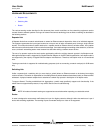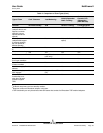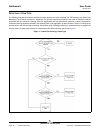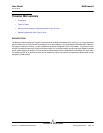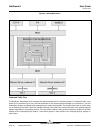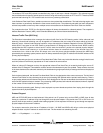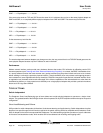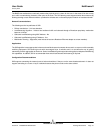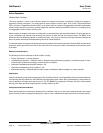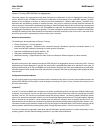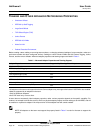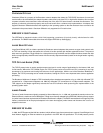
NetXtreme II User Guide
January 2010
Broadcom Corporation
Page 30 Teaming Mechanisms Document ENGSRVT52-CDUM100-R
ICMP ------> PhysAdapter1 ------> 10.0.0.1
If the server also sends an TCP and UDP flow to the same 10.0.0.1 address, they can be on the same physical adapter as
IGMP and ICMP, or on completely different physical adapters from ICMP and IGMP. The stream may look like this:
IGMP ------> PhysAdapter1 ------> 10.0.0.1
ICMP ------> PhysAdapter1 ------> 10.0.0.1
TCP------> PhysAdapter1 ------> 10.0.0.1
UDP------> PhysAdatper1 ------> 10.0.0.1
Or the streams may look like this:
IGMP ------> PhysAdapter1 ------> 10.0.0.1
ICMP ------> PhysAdapter1 ------> 10.0.0.1
TCP------> PhysAdapter2 ------> 10.0.0.1
UDP------> PhysAdatper3 ------> 10.0.0.1
The actual assignment between adapters may change over time, but any protocol that is not TCP/UDP based goes over the
same physical adapter because only the IP address is used in the hash.
Performance
Modern network interface cards provide many hardware features that reduce CPU utilization by offloading certain CPU
intensive operations (see Teaming and Other Advanced Networking Properties). In contrast, the BASP intermediate driver
is a purely software function that must examine every packet received from the protocol stacks and react to its contents
before sending it out through a particular physical interface. Though the BASP driver can process each outgoing packet in
near constant time, some applications that may already be CPU bound may suffer if operated over a teamed interface. Such
an application may be better suited to take advantage of the failover capabilities of the intermediate driver rather than the
load balancing features, or it may operate more efficiently over a single physical adapter that provides a particular hardware
feature such as Large Send Offload.
TYPES OF TEAMS
Switch-Independent
The Broadcom Smart Load Balancing type of team allows two to eight physical adapters to operate as a single virtual
adapter. The greatest benefit of the SLB type of team is that it operates on any IEEE compliant switch and requires no special
configuration.
Smart Load Balancing and Failover
SLB provides for switch-independent, bidirectional, fault-tolerant teaming and load balancing. Switch independence implies
that there is no specific support for this function required in the switch, allowing SLB to be compatible with all switches. Under
SLB, all adapters in the team have separate MAC addresses. The load-balancing algorithm operates on Layer 3 addresses
of the source and destination nodes, which enables SLB to load balance both incoming and outgoing traffic.




